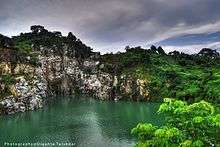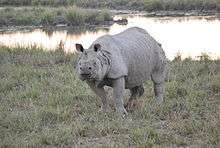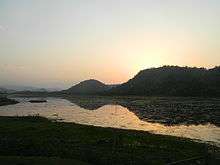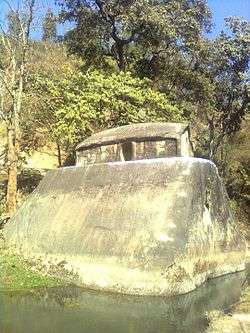Tourism in Assam

Roughly shaped like a bird with wings stretching along the length of the Brahmaputra river, Assam is the central state in the North-East Region of India and serves as the gateway to the rest of the Seven Sister States. The land of red river and blue hills, Assam comprises three main geographical areas: the Brahmaputra Valley which constitutes the expansive wingspan, the Barak Valley extending like a tail, and the intervening Karbi Plateau and North Cachar Hills. Assam shares its border with Meghalaya, Arunachal Pradesh, Nagaland, Manipur, Tripura, Mizoram and West Bengal; and there are National Highways leading to their capital cities. It also shares international borders with Bhutan and Bangladesh. In ancient times Assam was known as Pragjyotisha or Pragjyotishpura, and Kamarupa.
Introduction
Assam has enjoyed a reputation for unspoiled natural beauty, substantial biodiversity, tea plantations, and friendly people. The Brahmaputra, the lifeline of the valley which shares its name, floods the nearby land with fertile silt every year to ensure a rich harvest. It is bound on either side by marshy land covered with thick jungle grass, interspersed with patches of rice fields and terraced tea gardens. There is little to interrupt the vast panorama except the occasional lone hillock. Only in the south of the valley is the even horizon broken by the hills of Karbi Anglong. Further south are the North Cachar Hills. Located here, amid orchards is Assam's only hill station, Haflong. The southern part of Assam is the Barak Valley, this region hosts untouched natural beauty. Green is the dominant colour of the state, with an impressive 35% forest cover and thousands of hectares under tea cultivation. Assam has five national parks including the World Heritage Sites of Kaziranga and Manas, and 20 Wildlife and Bird Sanctuaries. The great Indian one-horned rhinoceros is one of Assam's most noteworthy fauna.
Supporting the state's abundant wildlife and lush vegetation are the monsoons. They stretch from the late May to September, but there are intermittent rains even in the winters. High temperatures cause the rivers to swell with melted snow from Himalayas. Winter begins in late November and continues till February. Cool, gentle breezes blow in January and February keeping the days clear and sunny. Winter mornings in most of Assam are marked by a dense fog.
Over the centuries, people of various ethnic, religious and linguistic backgrounds have been attracted by the fertile river valleys of Assam, and adopted them as their home. The people of Assam are mosaic of various cultures. They are from a range of racial backgrounds including Austro-Asiatic, Indo-Aryan and Tibeto-Burman.
Tourist Hotspots
Template:Tourism in North East India


For the purposes of tourism there are wildlife reserves like the Kaziranga National Park, Manas National Park, Pobitora Wildlife Sanctuary, Nameri National Park, Dibru-Saikhowa National Park etc. It has a rich cultural heritage going back to the Ahom Dynasty which governed the region for many centuries before the British occupation.
Notable tourist destinations are listed below:[1]
Guwahati
One of the key urban centres of Assam and the biggest city in North-East India, this serves as the major gateway to the whole region. The major tourist spots of Guwahati are Kamakhya Temple, River Cruise on the river Brahmaputra, Shankardev Kalakshetra, Umananda Temple, Assam State Zoo, Shilpagram etc. Chandubi Lake, Sonapur, Madan Kamdev, Chandrapur and Pobitora Wildlife Sanctuary are other famous spots outskirts the city.While visiting Madan Kamdev Tourists also visit the ancient temple Gopeswar Mandir situated in village Deuduar.
Majuli
The largest freshwater island[2] in South Asia on the Brahmaputra River. Majuli is famous for its Vaishnavite Satras such as Kamalabari Satra, Dakhinpat Satra, Garamurh Satra, Auniati Satra, Bengenaati Satra and Samaguri Satra.
Kaziranga National Park
This protected area is a UNESCO World Heritage Site and serves as one of the last remaining habitat of the Great Indian One-horned Rhinoceros. Also check out Manas National Park and Orang National Park.
Jatinga
This village is famous for mysterious suicides of the birds, located in Dima Hasao.
Sonitpur
Protected areas to see in the district are Nameri National Park, Bura Chapori Wildlife Sanctuary, Sonai Rupai Wildlife Sanctuary and a part of Orang National Park. Bhalukpong is also an important tourist place. Tezpur is a small town steeped in history and culture. Some of these are Agnigarh, Mahabhairav Temple, Chitralekha Udyan, Bamuni Hills, Usha Pahar etc. Biswanath Chariali town is 75 km away from Tezpur, is famous for the Biswanath Ghat, also called popularly as "Gupta Kashi".
Jorhat
Situated at 318 km east from Guwahati, Jorhat is a very important city, the last capital of Ahom era, as well as the tea capital of India. Important spots in and around Jorhat city are Jorhat Science Centre and Planetarium, Jorhat Gymkhana Club, Raja Maidam, Tocklai Tea Research Institute, Dhekiakhowa Bornamghar, Gibbon Wildlife Sanctuary, Lachit Maidam, Molai forest, Kaziranga Golf Resort, Thengal Bhawan etc.
Sivasagar
Seat of the Ahom Kingdom. Check out Rang Ghar, Talatal Ghar, Sivadol, Kareng Ghar of Garhgaon, Joy Dol, Sivasagar Tank, Joysagar Tank, Joymati Maydam, Vishnu Dol, Devi Dol, Gourisagar Dol and Tank, Charaideo, Namdang Stone Bridge, Uttaran Museum, Panidihing Bird Sanctuary and you also see Tea Estates etc...
Hajo
Hajo is an ancient pilgrimage centre for three religions Hinduism, Islam and Buddhism.
Haflong
Haflong is the only hill station of Assam. The headquarters of Dima Hasao. The village of Jatinga is known for mysterious bird suicide on the night of new moon.
Tinsukia
Many prominent shopping malls are there in Tinsukia. Dibru-Saikhowa National Park one of the biggest national parks in India are situated in Tinsukia. This national park is considered as one the biological hotspots. The Tilinga Mandir(Bell Temple) is a well-known temple situated in the outskirts of Tinsukia city. Digboi Refinery the Asia's oldest refinery is situated here. A railway park is recent addition to the city Dehing Patkai Festival annual festival held at Lekhapani in Tinsukia district. India's only coal museum is situated at Margherita town in Tinsukia district. Tribal communities in Tinsukia district have taken initiatives to promote ecotourism in the region. The Singpho Eco Tourist lodge in Margherita-Pengari road and the Faneng Village at Lekhapani are two such initiatives by the local tribal communities.
Dibrugarh
Dibrugarh is called the tea capital of the world. The town is situated on the edge of the Brahmaputra River. Set amidst extensive tea estates, Dibrugarh offers tourists the opportunity to experience a life in a tea estate. Recently, tea tourism has started becoming popular, with travel companies such as Greener Pastures and Purvi Discovery offering tea tours. Tipam is a famous tourist spot of Dibrugarh. Tipam is an ethnic village which is famous for its historical places. Besides Tipam, Dehing Patkai rainforest is the other attraction. Presently the city has the biggest railway station in Assam with 18 Lines opened in 2009. Rajdhani Express Train Originate from Dibrugarh and Dibrugarh Town.
Practical Information
Weather & Rainfall
Assam has temperate weather with maximum of 35-38 °C in summer and a minimum of 6-8 °C in winter in low-lying areas, particularly the Brahmaputra Valley and Barak Valley. As one ascends towards the hilly areas, however, the mercury falls considerably in winters. Assam experiences high rainfall and humidity - afternoon thunder showers are a common occurrence during monsoons - and early morning fog in winter is also common.
Transportation
Arriving by Air: Guwahati's Lokapriya Gopinath Bordoloi International Airport is well-connected to the major cities in India. Taxi service is including prepaid services are available at the airports for transfer to the city. There are also at Silchar, Dibrugarh, Jorhat and Tezpur which run flights to Kolkata and the other parts of the northeastern region.
Arriving by Rail: The three major routes of the North East Frontier Railway connected Assam to nodal stations in the rest of the country. Guwahati, Assam's largest railway station, is served by direct trains to New Delhi (Rajdhani 27 hours), Kolkata (Saraighat Express 17 hours), Mumbai (Dadar Express 54 hours) and Banglore (Banglore Express, 60 hours). There are also direct trains from these cities to Dibrugarh, which is a further 12 hours from Guwahati. The toll numbers for enquiry of train timings/schedule:
- Enquiry: 131/133
- Reservation: (0361) 2541799
- Train status: (0361) 2540330/136
By Road: The Assam State Transport Corporation along with several private companies operates buses connecting Guwahati with Tezpur, Jorhat, Dibrugarh, Tinsukia, Silchar, Dimapur, Kohima, Imphal, Aizawal and Itnagar.
Photo Gallery
 Peacock island, Guwahati.
Peacock island, Guwahati. Rang Ghar in Sivasagar.
Rang Ghar in Sivasagar. The landscape beauty of Blue water lake at Kathalguri village in Karbi Anglong district of Assam.
The landscape beauty of Blue water lake at Kathalguri village in Karbi Anglong district of Assam. A rhino at Pobitora Wildlife Sanctuary.
A rhino at Pobitora Wildlife Sanctuary.- Agnigarh Hill, Tezpur.
 View of Nameri National Park of Sonitpur District.
View of Nameri National Park of Sonitpur District. Chandubi lake, near Guwahati.
Chandubi lake, near Guwahati..jpg) The Road to Kamakhya.
The Road to Kamakhya. Dakhinpat Sattra of Majuli.
Dakhinpat Sattra of Majuli.- Kareng Ghar, Garhgaon.
- A view of River Kakodonga.
 A Rock-cut Temple at Maibang, Dima Hasao.
A Rock-cut Temple at Maibang, Dima Hasao.
See also
- Majuli Conservation by Jadav Payeng
- Tourism in North East India
- Assam - Attractive Destinations
- Protected areas of Assam
- List of Satras
- Dhola-Sadia bridge
Outline of Tourism in India
- List of World Heritage Sites in India
- List of national parks of India
- List of lakes of India
- List of waterfalls in India
- List of State Protected Monuments in India
- List of beaches in India
- Incredible India
- List of Geographical Indications in India
- Medical tourism in India
- List of botanical gardens in India
- List of hill stations in India
- List of gates in India
- List of zoos in India
- List of protected areas of India
- List of aquaria in India
- List of forts in India
- List of forests in India
- Buddhist pilgrimage sites in India
- Hindu pilgrimage sites in India
- List of rock-cut temples in India
- Wildlife sanctuaries of India
- List of rivers of India
- List of mountains in India
- List of ecoregions in India
- Coral reefs in India
- List of stadiums in India
References
- ↑ "Welcome to Assam Tourism Official website of Deptt. of Tourism, Assam, India". assamtourism.gov.in. 1987-04-03. Retrieved 2016-09-23.
- ↑ Majuli, River Island. "Largest river island". Guinness World Records. Retrieved 6 September 2016.